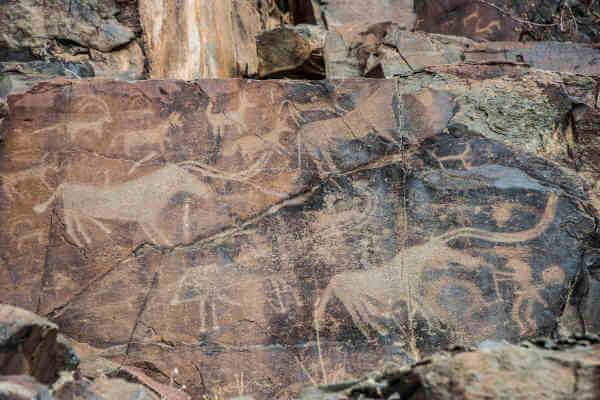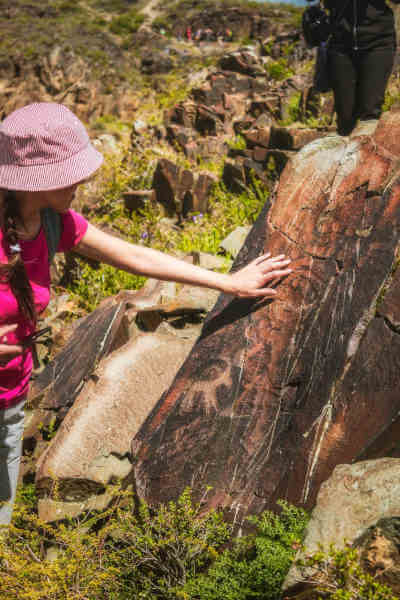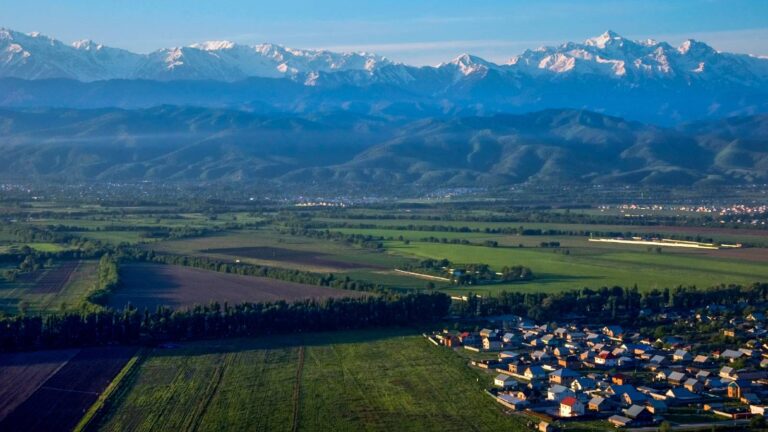Getting There
It is an “open-air” gallery named after the Tamgaly River in the Southeast part of Chu-Ili Mountains and is located 170 km from the biggest city of Kazakhstan – Almaty.
he most flexible way to reach Tamgaly Tas is by car. You can rent a vehicle in Almaty and embark on a scenic road trip to the petroglyphs. The journey takes around 3-4 hours, allowing you to enjoy the ever-changing landscapes along the way.
Moreover, many tour operators in Almaty offer guided tours to the site. This option provides you with the convenience of a knowledgeable guide who can share insights into the history and significance of the petroglyphs.
What to Expect
Visiting Tamgaly Tas is an immersive experience that transports you back in time through its ancient rock art. The complex contains more than 5 000 petroglyphs and rock carvings dating for the second half of the second millennium BC to the beginning of the 20th century. The various pictures display the sun-headed idols, women in childbirth, hunting scenes and a big variety of animals.
It also contains 5 images of Buddhist deities carved on the rocks. Historians date them to the 12th century. Besides Buddhist paintings, there are tamgas (emblems) of all Kazakh clans.
Besides Tamgaly Tas being an outstanding monument of art, history and culture, it also boasts great nature and landscapes. Here you can admire picturesque Ili River valley and surrounding vast steppes. Visiting this place is a great experience.
History
The history of Tamgaly Tas dates back millennia. It is believed to have been a sacred place for various nomadic tribes that roamed the Central Asian steppes. The petroglyphs were created by these ancient people, who used the rocks as a canvas to express their way of life, spiritual beliefs, and stories. Over the centuries, the petroglyphs have remained remarkably well-preserved, offering us a glimpse into the past that continues to inspire awe and admiration.
In 2004, Tamgaly Tas was recognized as a UNESCO World Heritage site, acknowledging its cultural significance and the need to protect this extraordinary heritage for future generations.








